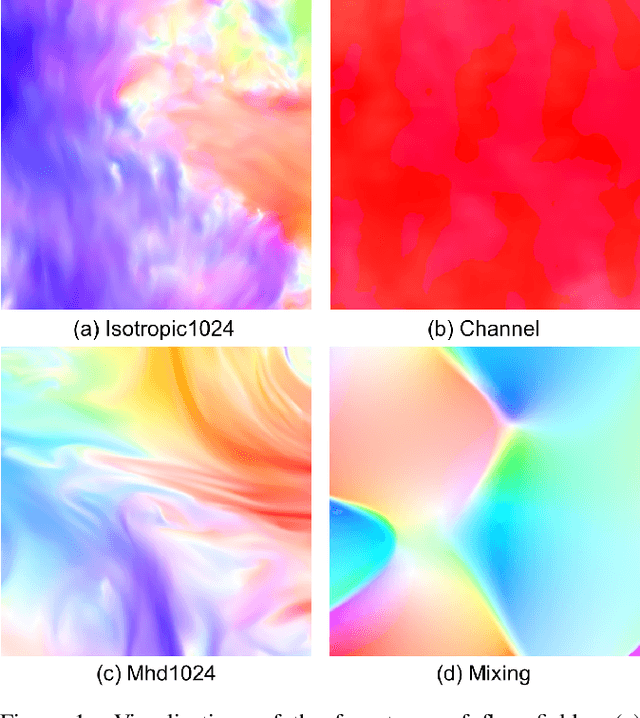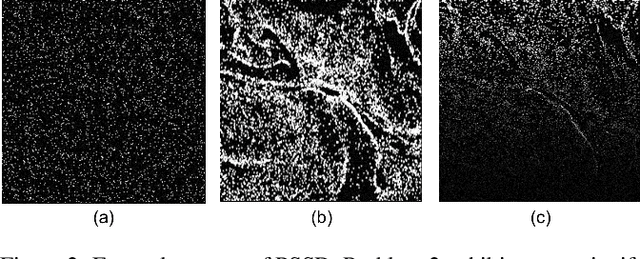Changqing Su
Spike Imaging Velocimetry: Dense Motion Estimation of Fluids Using Spike Cameras
Apr 26, 2025



Abstract:The need for accurate and non-intrusive flow measurement methods has led to the widespread adoption of Particle Image Velocimetry (PIV), a powerful diagnostic tool in fluid motion estimation. This study investigates the tremendous potential of spike cameras (a type of ultra-high-speed, high-dynamic-range camera) in PIV. We propose a deep learning framework, Spike Imaging Velocimetry (SIV), designed specifically for highly turbulent and intricate flow fields. To aggregate motion features from the spike stream while minimizing information loss, we incorporate a Detail-Preserving Hierarchical Transform (DPHT) module. Additionally, we introduce a Graph Encoder (GE) to extract contextual features from highly complex fluid flows. Furthermore, we present a spike-based PIV dataset, Particle Scenes with Spike and Displacement (PSSD), which provides labeled data for three challenging fluid dynamics scenarios. Our proposed method achieves superior performance compared to existing baseline methods on PSSD. The datasets and our implementation of SIV are open-sourced in the supplementary materials.
Inter-event Interval Microscopy for Event Cameras
Apr 08, 2025Abstract:Event cameras, an innovative bio-inspired sensor, differ from traditional cameras by sensing changes in intensity rather than directly perceiving intensity and recording these variations as a continuous stream of "events". The intensity reconstruction from these sparse events has long been a challenging problem. Previous approaches mainly focused on transforming motion-induced events into videos or achieving intensity imaging for static scenes by integrating modulation devices at the event camera acquisition end. In this paper, for the first time, we achieve event-to-intensity conversion using a static event camera for both static and dynamic scenes in fluorescence microscopy. Unlike conventional methods that primarily rely on event integration, the proposed Inter-event Interval Microscopy (IEIM) quantifies the time interval between consecutive events at each pixel. With a fixed threshold in the event camera, the time interval can precisely represent the intensity. At the hardware level, the proposed IEIM integrates a pulse light modulation device within a microscope equipped with an event camera, termed Pulse Modulation-based Event-driven Fluorescence Microscopy. Additionally, we have collected IEIMat dataset under various scenes including high dynamic range and high-speed scenarios. Experimental results on the IEIMat dataset demonstrate that the proposed IEIM achieves superior spatial and temporal resolution, as well as a higher dynamic range, with lower bandwidth compared to other methods. The code and the IEIMat dataset will be made publicly available.
TD-Net: A Tri-domain network for sparse-view CT reconstruction
Nov 26, 2023


Abstract:Sparse-view CT reconstruction, aimed at reducing X-ray radiation risks, frequently suffers from image quality degradation, manifested as noise and artifacts. Existing post-processing and dual-domain techniques, although effective in radiation reduction, often lead to over-smoothed results, compromising diagnostic clarity. Addressing this, we introduce TD-Net, a pioneering tri-domain approach that unifies sinogram, image, and frequency domain optimizations. By incorporating Frequency Supervision Module(FSM), TD-Net adeptly preserves intricate details, overcoming the prevalent over-smoothing issue. Extensive evaluations demonstrate TD-Net's superior performance in reconstructing high-quality CT images from sparse views, efficiently balancing radiation safety and image fidelity. The enhanced capabilities of TD-Net in varied noise scenarios highlight its potential as a breakthrough in medical imaging.
INeAT: Iterative Neural Adaptive Tomography
Nov 03, 2023Abstract:Computed Tomography (CT) with its remarkable capability for three-dimensional imaging from multiple projections, enjoys a broad range of applications in clinical diagnosis, scientific observation, and industrial detection. Neural Adaptive Tomography (NeAT) is a recently proposed 3D rendering method based on neural radiance field for CT, and it demonstrates superior performance compared to traditional methods. However, it still faces challenges when dealing with the substantial perturbations and pose shifts encountered in CT scanning processes. Here, we propose a neural rendering method for CT reconstruction, named Iterative Neural Adaptive Tomography (INeAT), which incorporates iterative posture optimization to effectively counteract the influence of posture perturbations in data, particularly in cases involving significant posture variations. Through the implementation of a posture feedback optimization strategy, INeAT iteratively refines the posture corresponding to the input images based on the reconstructed 3D volume. We demonstrate that INeAT achieves artifact-suppressed and resolution-enhanced reconstruction in scenarios with significant pose disturbances. Furthermore, we show that our INeAT maintains comparable reconstruction performance to stable-state acquisitions even using data from unstable-state acquisitions, which significantly reduces the time required for CT scanning and relaxes the stringent requirements on imaging hardware systems, underscoring its immense potential for applications in short-time and low-cost CT technology.
PC-bzip2: a phase-space continuity enhanced lossless compression algorithm for light field microscopy data
Oct 14, 2023Abstract:Light-field fluorescence microscopy (LFM) is a powerful elegant compact method for long-term high-speed imaging of complex biological systems, such as neuron activities and rapid movements of organelles. LFM experiments typically generate terabytes image data and require a huge number of storage space. Some lossy compression algorithms have been proposed recently with good compression performance. However, since the specimen usually only tolerates low power density illumination for long-term imaging with low phototoxicity, the image signal-to-noise ratio (SNR) is relative-ly low, which will cause the loss of some efficient position or intensity information by using such lossy compression al-gorithms. Here, we propose a phase-space continuity enhanced bzip2 (PC-bzip2) lossless compression method for LFM data as a high efficiency and open-source tool, which combines GPU-based fast entropy judgement and multi-core-CPU-based high-speed lossless compression. Our proposed method achieves almost 10% compression ratio improvement while keeping the capability of high-speed compression, compared with original bzip2. We evaluated our method on fluorescence beads data and fluorescence staining cells data with different SNRs. Moreover, by introducing the temporal continuity, our method shows the superior compression ratio on time series data of zebrafish blood vessels.
 Add to Chrome
Add to Chrome Add to Firefox
Add to Firefox Add to Edge
Add to Edge